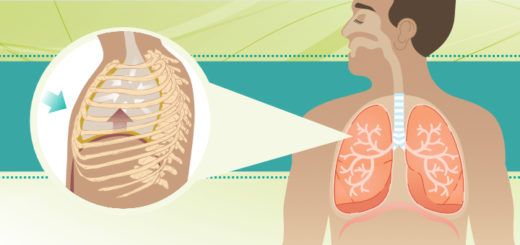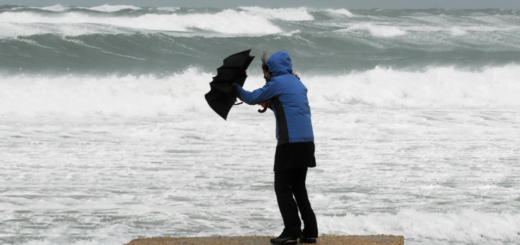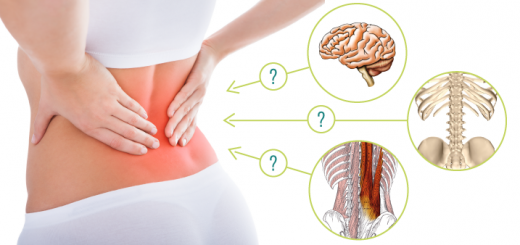How your autonomic nervous system defines your mental state, reactions and behavior
1Imagine yourself biking in a safe neighborhood on a nice day. You are feeling good and safe. When you go up the hill, you have to pedal a bit harder, and when you go downhill, you apply the brake a little and keep on cruising. You move with ease, alternating necessary effort with periods of rest, and enjoying the wind on your face. Then all of the sudden you cross some road and find yourself in a neighborhood that doesn’t feel safe. Maybe you see, smell or sense something that signals danger, maybe there is heavy traffic, or maybe you hear an approaching storm. Once you detect danger, you just want to get out, so you start to pedal harder; there is no more easy cruising. But in spite of your efforts, you find yourself in more and more danger (or at least it feels that way). You become more frantic and agitated, you pedal harder, yet get nowhere. Eventually you become so exhausted and overwhelmed that you fall off the bike, crawl into the bushes, curl up there and try to become invisible. It doesn’t matter how long you stay there terrified, you will not magically transport to a safe place. You need to get up, get back on your bike, and find your way out of there, so that you can return back to safety.
This story illustrates the actions of your autonomic nervous system (ANS) that you experience all the time as you metaphorically pedal through your day. If all goes well, you cruise around mobilizing your resources and then slowing down and recovering, as necessary, to meet the challenges of the day. But if things start to spiral out of control, you might find yourself descending into a place of numbness and exhaustion. According to Polyvagal Theory, as presented by Deb Dana in her book The Polyvagal Theory in Therapy, there are three main organizing principles that guide this daily activity:
The first organizing principle of the ANS is Hierarchy.
“The autonomic nervous system responds to sensations in the body and signals from the environment through three pathways of response. These pathways work in a specified order and respond to challenges in predictable ways.”(1) In our metaphorical example above, once you sense that you are in danger, you can get yourself out of danger and back to the state of safety if you pedal hard and steer in the right direction. But if you start riding in circles, you will find yourself more and more scared, and eventually will spiral into immobility and total collapse. Once you collapse, there is a long road back to safety. You will have to mobilize yourself first and actively make your way back to the “safe neighborhood.” You can envision the activity of your ANS as a kind of ladder of physiological and resulting emotional states. You move and down that ladder all day long. It would look like this:

If you find yourself at the bottom of the ladder, it will take some action and effort to climb back up.
The second organizing principle of the ANS is Neuroception.
Your ANS constantly scans the world around you “for cues of safety, danger and life-threat without involving the thinking parts of the brain.”(1) Neuroception precedes perception and it is assembled from many cues. “Information from the viscera (heart, lungs, intestines) and cues from the place we are in and from the people and things around us are all important components of neuroception. “(1) Long before you become consciously aware that something is not quite right, your ANS has already detected it and already initiated a physiological response to protect you from harm. By the time you consciously perceive danger, your body has already reacted to it, and then your mind tunes in and tries to figure out why you feel the way you feel. “We live a story that originates in our autonomic state, is sent through autonomic pathways from the body to the brain, and is then translated by the brain into the beliefs that guide our daily living. The mind narrates what the nervous system knows. Story follows state.”(1) Whatever story you tell yourself about why you feel a certain way, you are trying to explain your physiological response after it had already happened. Sometimes you are correct in identifying what had happened, sometimes you are not. In terms of our psychological well-being, “perception is more important than reality”, because this is what guides our emotional states and our actions. In our biking metaphor above, the neighborhood that you perceive as dangerous might be perfectly safe, but to you it doesn’t feel that way because of your past experiences. You interpret your “gut feelings” (tension in the stomach, increased heart rate) a certain way (there is suspicious looking activity on the corner) and base your actions (get out of here as fast as I can) on that interpretation. This happens for the most serious events (EX: almost getting run over by a car) and the most mundane ones (Ex: your child giving you attitude).
The third organizing principle of the ANS is Co-regulation.
“From the first moments of life, when we instinctively turn toward our mother’s face, to the end of life, we have an enduring need to be in attuned relationships with others… Co-regulation creates a physiological platform of safety that supports a psychological story of security that then leads to social engagement. The autonomic nervous systems of two individuals find sanctuary in a co-created experience of connection.”(1) In other words, it is necessary for us as humans to have close reciprocal relationships with other human beings. We rely on those relationships for physiological and resulting emotional regulation. In our metaphorical biking example above, if you curl up in the bushes exhausted and terrified, and then you see a car pull over with your best friend at the wheel who had been looking for you, you will feel much better immediately. As your friend helps you into the car and takes you home, you begin to slowly recover and process your experience. In the best-case scenario, that friend would offer you undivided attention and unconditional support to help you climb out of that defeated state. We seek co-regulation not just from friends and family members, but also from our therapists, yoga teachers, checkout clerks and all people in general. You know how a friendly smile on a bad day can make you feel a little better. We look for friendly signs from strangers to decide whether or not to approach and engage, but we usually do not feel particularly hurt if the signal we get is “Do not engage”. However, we expect emotional reciprocity from our closest relationships and feel very hurt if we do not get it. When our most important people betray our expectations, and do not engage in heartfelt listening and responding, it inhibits our ability to effectively regulate our nervous systems. This is wired into our physiology.
Our autonomic nervous system defines how we live our lives. Based on our ANS assessments, we choose to approach or to avoid, to proceed or to withdraw. Our responses are automatic and happen below our conscious awareness, but there are strategies we can use to regulate our autonomic nervous systems and ensure that we stay closer to the top of the emotional ladder. We will talk about those next time. Tune in!
[jetpack_subscription_form]
Resources
1. Deb Dana The Polyvagal Theory in Therapy




















Thank you for this awesome illustration of the autonomic nervous system as a ladder. When I do telehealth sessions, I share it via my screen and it helps to give clients a great visual in which they can conceptualize what’s happening in their own system. Thanks!